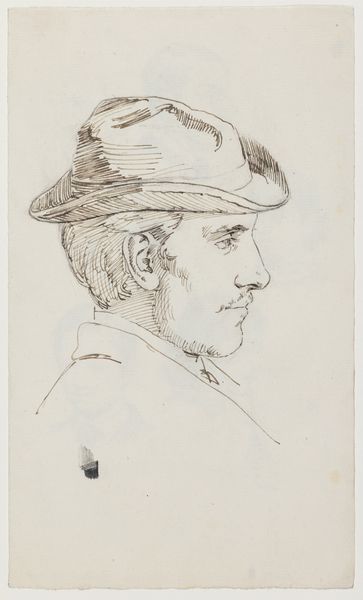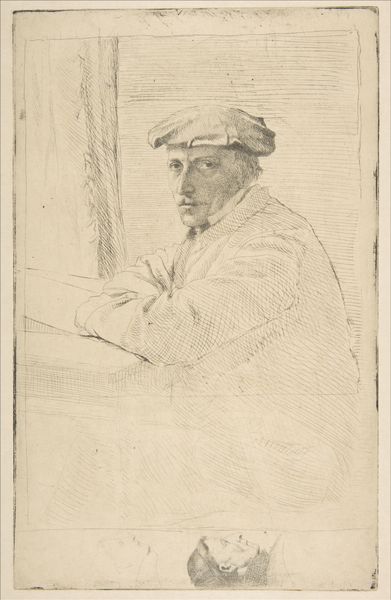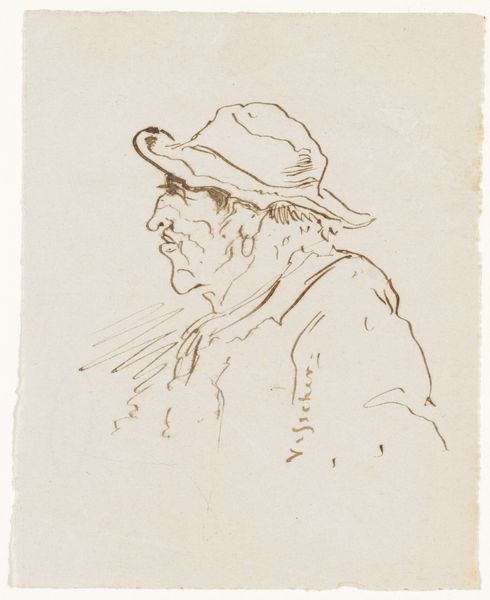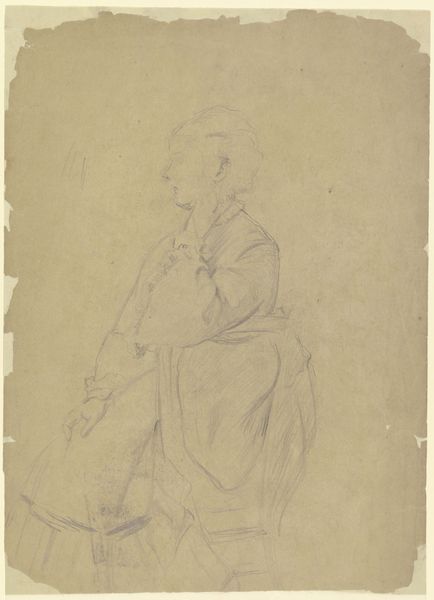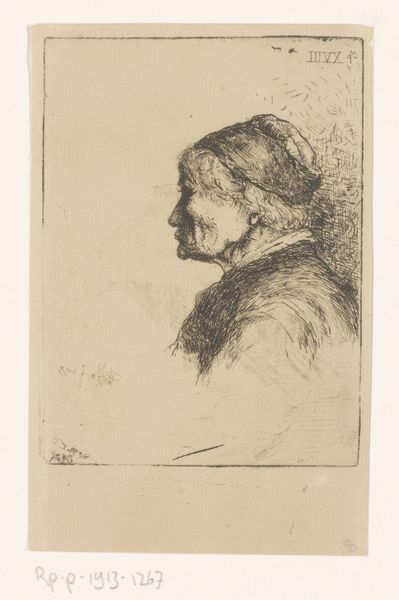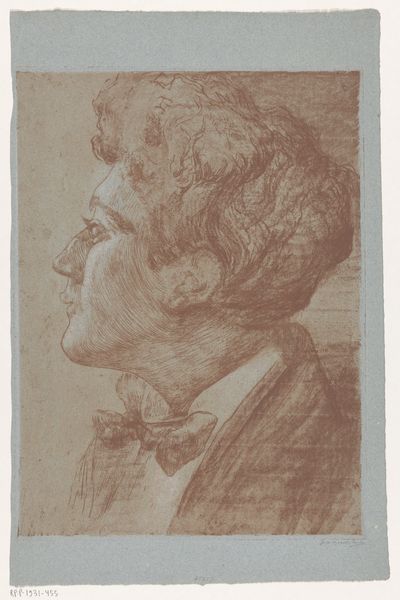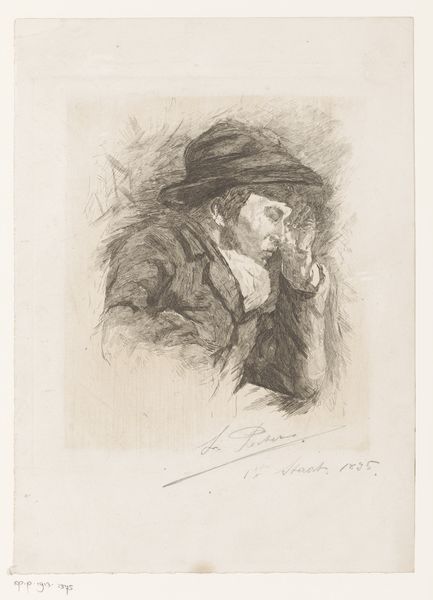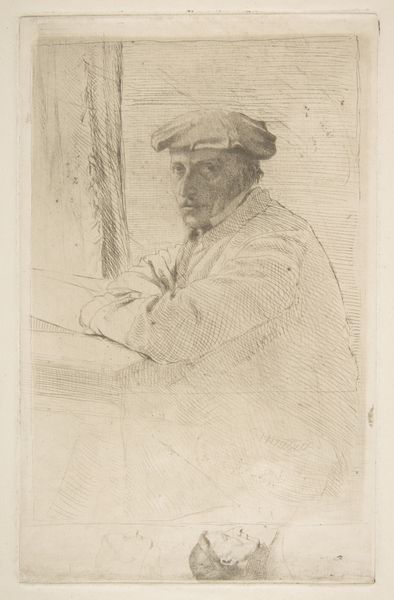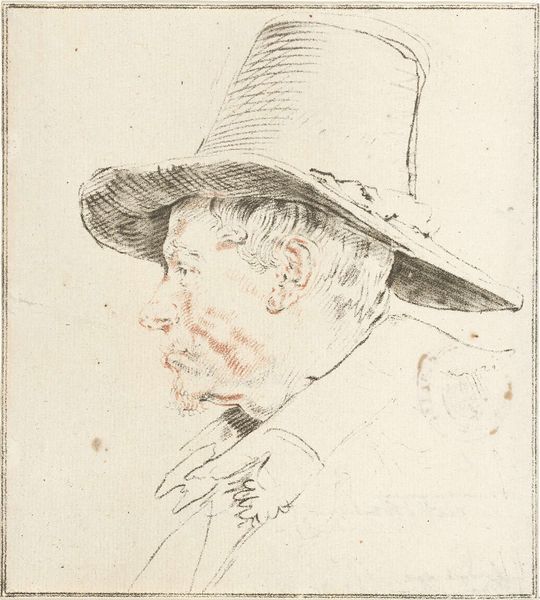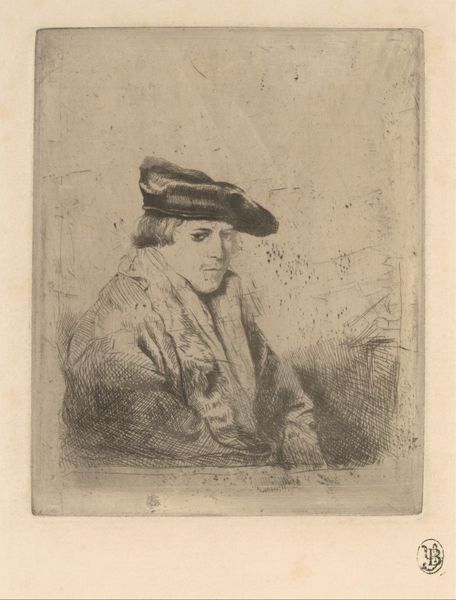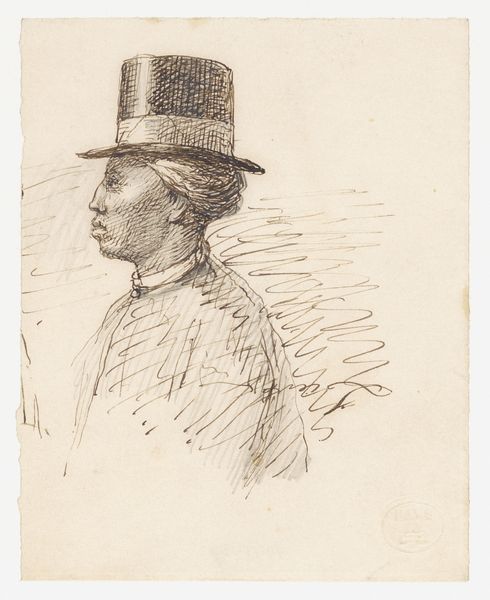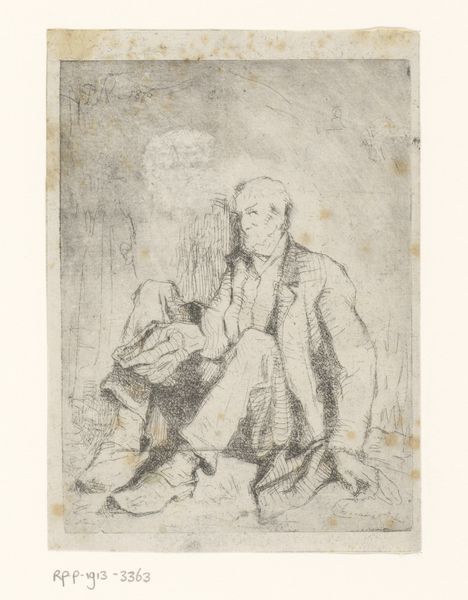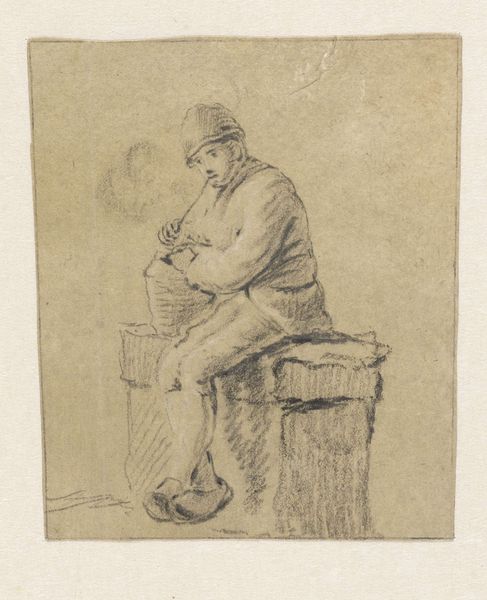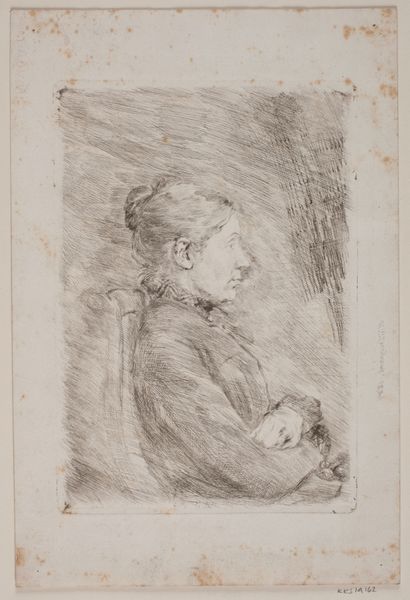
drawing, pencil
#
portrait
#
drawing
#
pencil
#
realism
Dimensions: 240 mm (height) x 155 mm (width) (bladmål)
Curator: Immediately striking is the stark simplicity of this sketch – almost severe in its understatement. Editor: That directness resonates, doesn’t it? Well, let's delve in. Here we have “Mandsportræt,” or “Man’s Portrait,” a pencil drawing by Albert Gottschalk. It resides here at the SMK, Statens Museum for Kunst. It’s hard to date this one precisely, but the window is between 1866 and 1906. Curator: He’s quite ordinary in his dress; I get the sense this could be an artist taking a subject he would have seen walking down the street, but look closely at the gaze...there's something far from ordinary there, some quiet contemplation. The pipe is an important visual detail too, isn't it? It conveys much more than just "smoking." Editor: Exactly. Pipes often appear in portraits of this era and were associated with masculinity and intellect; think about the cultural symbolism connected to leisure, reflection and even belonging to a particular social class. It brings in elements of identity and role, the social politics of portraiture if you like. What is intriguing about the cultural symbolism embedded in such a simple portrait? Curator: The bareness, I think, the starkness makes one hone in on what little "narrative support" there is...the hat and pipe are so much more impactful for that. And as we contemplate identity, I note also how exposed he is. The exposed paper in conjunction with exposed pipe almost screams "honest portrayal," it feels confessional, open... I find myself wondering what the subject felt like during this process of creation, or the artist themselves? Editor: Indeed, the social context adds another dimension. Portraiture at this time was used in a way for projecting ideals and the social standards; how does Gottschalk challenge such conventional projections through an informal study like this, and where is this placed amongst the history of public display? We often see this as preparatory or an experimental approach of this form and, if so, does that impact your interpretation? Curator: If we understand that portraiture generally creates distance, either in presentation or in subject and style, in the conventions of its purpose or era, here it feels Gottschalk reduces that gap... Editor: Interesting perspective. For me, I leave appreciating the complex interplay between identity and societal projections. Curator: Agreed. It’s those lingering whispers between the lines, or in this case, between the pencil strokes that really engage the psyche.
Comments
No comments
Be the first to comment and join the conversation on the ultimate creative platform.
